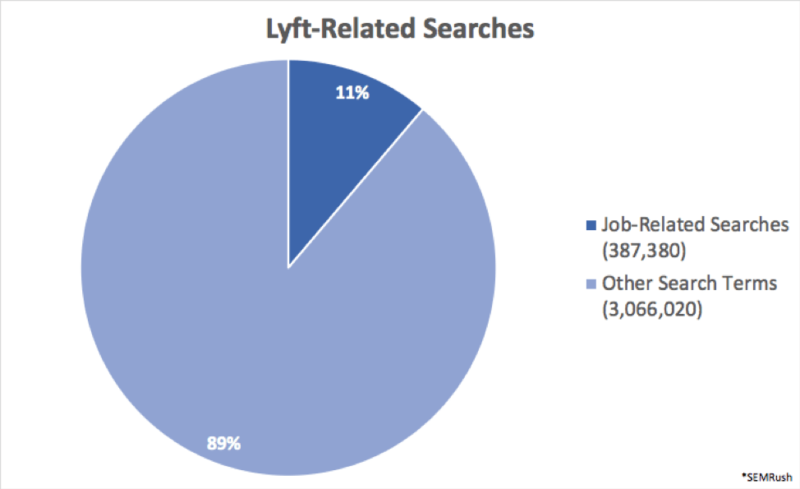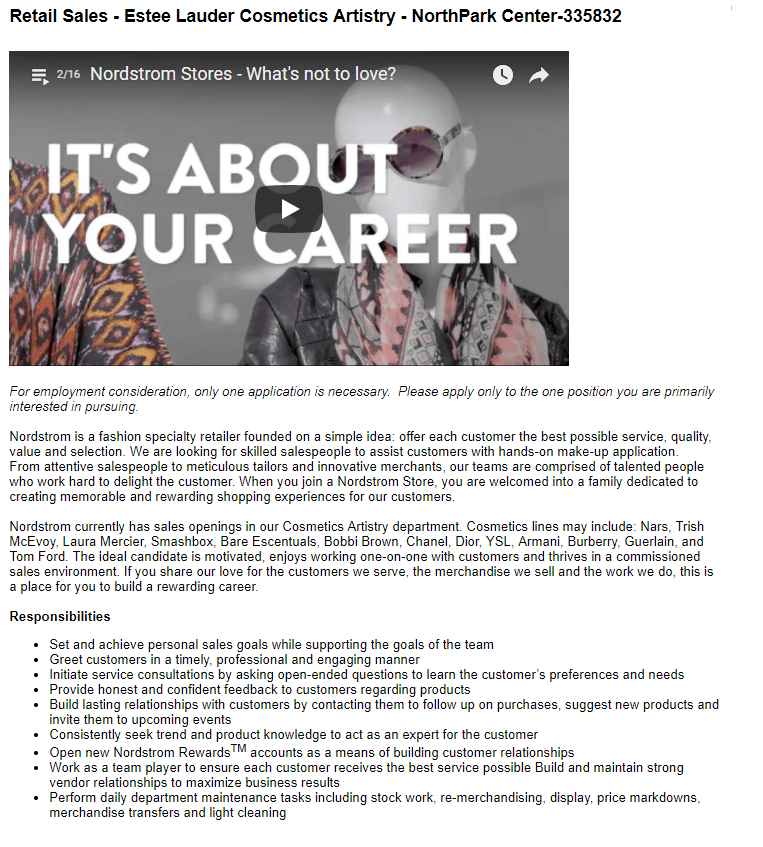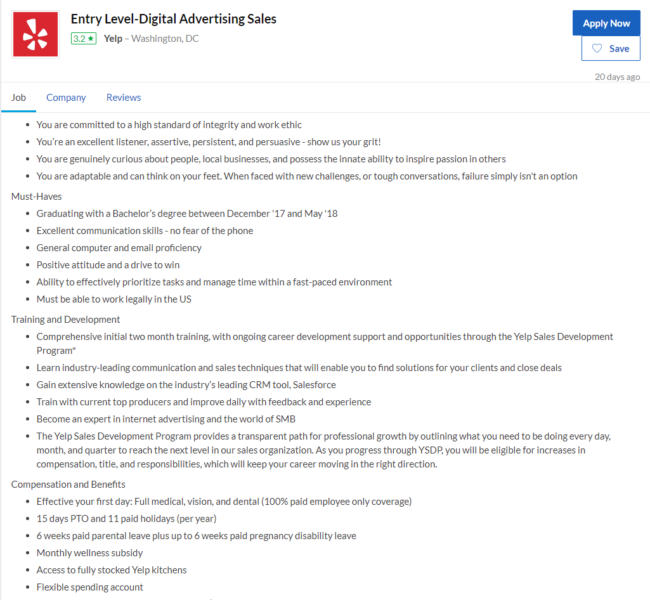Recruitment SEO: How to create a well-optimized career section on your site
Are you looking for quality hires? Contributor Thomas Stern explains how optimizing the careers section on your site will attract qualified candidates.

If a job candidate is interested in your company, he or she will immediately go into research mode and scour the Internet for more information. You should expect job seekers to visit your company website to learn more about leadership, culture, and other available jobs in their field.
For employers and site owners, you can improve the job seeking experience as well as your company’s recruitment pipeline by building out and optimizing a careers section on your site.
Google for Jobs
With Google for Jobs, Google prioritized helping both job seekers and employers by enhancing the search engine results page (SERP) user experience (UX) for job postings.
Now, job postings will have more prominent placement in SERPs for job-related search queries. You will see SERP features like a company logo, reviews, ratings, job details, and a dedicated job search user interface (UI) that lets searchers explore jobs without leaving the SERPs.
This new user experience enables job seekers to focus their search queries based on these specific factors:
- Location
- Department
- Date Posted
- Employer
It’s imperative hiring managers work directly with search engine optimization specialists (SEOs) to ensure each page can be found simply and easily, especially for corporate-level companies. With that in mind, take the time to update the architecture of your careers section and job postings for both discovery and conversion.
Careers section best practices
A discoverable careers section of a company’s website starts with an organized category architecture. Using a folder structure that incorporates location and department will segment job applications in a way that people will navigate naturally.
Take a look at what you have to offer with each job posting, corporate-level companies with many global offices may need to have location be a prominent factor of the content, especially if departments are segmented by the office. In this case, it makes sense to lead category pages with location types.
Take the conversion funnel into the account, non-branded and branded search terms will bring in two completely different types of people. You can assume people who found the job posting via branded search terms are considering working with your company more heavily, but may also have other brands on their shortlist.
It’s important to keep your careers section well-organized so they can find the information they need quickly and easily. Most companies will simply need to break job roles down by department structure, group them together and branch out from there as needed.
Optimize your job posting
Job seeking is an incredibly personal journey, so it’s important to put yourself in the job hunter’s shoes by asking these questions:
- What are they looking for in their first job?
- What do they need from their next job?
- If you’re looking for a natural leader, what types of titles are they drawn to?
The following example illustrates total monthly phrase match search volume for Lyft. Specific modifiers were segmented (driver, jobs, careers, etc.), showing that roughly 11 percent of all of Lyft’s branded searches are employment related.
For people aware of the Lyft brand, that’s a significant amount of people looking for both day-to-day driver and corporate jobs all around the United States each month.
Just like other discoverable content, you need to build your careers pages with user intent in mind. To ensure your job posting is found, you need to treat it like you would any other landing page. It needs to have enough information to tell a good story and incredibly relevant keywords that are easy to understand in the title tags.
Since people typically search for a specific type of job, experience level, type of company, or type of industry, it makes sense to include that information in the title tags. For example:
- Title (SEO Specialist) | Type of Company or Industry (Entry-Level Jobs in Digital Marketing Agency)
- Title (Cosmetics Engineer) | Type of Company or Industry (Engineering Jobs in Beauty Industry)
Organize the job posting to meet a job hunter’s expectations. That means defining the purpose of the role, its day-to-day responsibilities, and providing a short summary of the general career path for the ambitious.
Depending on experience level, it becomes more and more applicable to integrate jargon, technical terms, or industry lingo. Weave in information about the company where you can.
Do what you can to make job postings as concise as possible. Every job description has a certain level of expectations in terms of format, it starts with requirements and ends with nice-to-haves. Assume a job hunter is looking at as many jobs as possible, so make it brief, easy to skim, and memorable.
That’s why using clear headings, video and bullet point lists are so common; here is an example:
How do I get my job postings to pop in the SERPs?
With the right page elements, you should have no problem appearing in Google SERPs.
It’s important to add job posting structured data to your jobs pages. Using structured data for job postings ensures that Googlebot can crawl your job posting easier as well as provide a signal that specific content is relevant and accurate enough to display on the search results page.
If you can’t add the schema markup yourself, it should be easy to find a freelancer who can. Test and preview your structured data using this public tool from Google.
At that point, it’s just doing your due diligence to ensure Google can crawl the page. Double check and ensure that the job postings section are indexable, and submit new sitemaps whenever there are changes to your job postings. If a job is no longer available, make sure to use a noindex meta tag and say so on the job page.
Run authentic job postings
It’s important to remember job postings may be the first touchpoint a person will have with your company. Treat them like landing pages, they need to be able to say a lot of information with just a few words.
It’s important to represent yourself properly so the applicant knows exactly what there is to know about your organization. Non-branded search terms such as “careers in SEO” or “SEO jobs near Phoenix” indicate that a potential applicant may not be aware of your company or are open to competing companies. Phrases such as “SEO jobs at ZOG Digital” indicate that a person is instead looking for a specific job type with your company, rather than a job type or a company.
That’s why your job content needs to be realistic, accurate and truthful in order to satisfy their job hunt needs. Your brand, experience-level, or industry can influence the tone of the job posting. Long-form, in-depth content about your company and departments is a great way to generate top-funnel visibility and begin a recruitment pipeline years in advance, even if a job description isn’t prepared yet.
Audience goals, business needs
In past pieces, we discuss aligning audience goals with business needs, and it remains true here.
For example, an entry-level account executive role at a Yelp has enough breathing room to allude to the team culture throughout the job posting and the fully-stocked Yelp kitchens certainly don’t hurt!
If the potential applicant gets curious about other sales roles or about how the team functions, they meet that need with category-level content for sales and account management.
What’s interesting is that they have two sets of identical job postings in different categories. One set specifically targets self-motivated, competitive college grads with their own category-level content and job postings that are more specific to launching a five-star career.
Their content is conversational even when discussing a robust training program, ensuring that people are willing to travel to one of their five U.S. offices. This category also siphons out the other sales and account management roles that may require more experience as well.
To ensure that your job posting is found by top talent, it’s imperative to do what you can to your career site to ensure it’s discoverable. If you’re eager to identify top talent and improve your recruitment pipeline, job search optimization is well worth the investment.
Opinions expressed in this article are those of the guest author and not necessarily Search Engine Land. Staff authors are listed here.
Related stories



